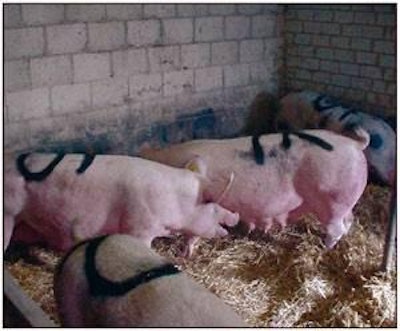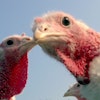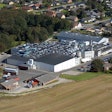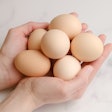
As from the year 2013 it will be a legal requirement in Europe to keep all sows and gilts in groups during a period starting 4 weeks after mating until one week before the expected time of farrowing. This European move towards group gestation gives added significance to the question of whether the social rank of a sow has any effect on her fertility. Few answers have been available until now, but we have new results showing that the influence of the so-called peck order can be quite strong. Sows with a lower rank were more likely to return to oestrus after mating and they gave birth to smaller litters.
These indications have been obtained from a field study investigating the impact of the social order on some fertility parameters in a total of 497 sows. Whenever unfamiliar sows are mixed together, of course, they tend to fight each other in order to establish a relative social ranking that should then avoid the need for outright aggression to settle any future disputes between the animals. Our study mixed 8 sows per group under standardised conditions in an area known as a stimulation pen, shown in the accompanying photo, and registered both the number of fights and their outcome for each sow from soon after weaning until artificial insemination. The individual rank in the social hierarchy was calculated according to the ratio of victories and defeats.
When this was put with performance parameters, analysis showed that sows of a low rank had a significantly higher rate of returning to heat compared with high ranking penmates (19.1% versus 12.1%, significant statistically at P<0.05). Moreover, sows of high rank achieved significantly larger litter sizes. See from Table 1 that their total number born averaged more than half a pig extra per litter, while their number born alive was greater by over 0.4 pigs/litter.
Table 1: Influence of sow's social rank on total litter size and piglets born alive
The results in themselves are revealing, but they raise even more questions about the reasons for the difference in fertility between the social ranks. Every producer knows that aggression between animals mixed during the early stages of pregnancy results in stress responses and that these can have detrimental effects on reproductive parameters, such as a return to heat and a smaller number of liveborn piglets per litter. However, our study had grouped sows in an arena at weaning, so the highly stressful event of introduction occurred before the animals became pregnant.
This particular arena is at the 80-sow research station of the University of Giessen. The herd is managed in a fortnightly rhythm. Every second Thursday, a batch of 8 litters is weaned and the sows moved to the stimulation pen (so called because it is located next to a boar). It measures 5m x 4.8m and therefore provides the 3m2 per sow required by a European Union directive. Its floor is concrete, covered with straw bedding. The sows stay in this pen for 2 days, from Thursday morning until the following Saturday morning, before being brought into the service centre where there are individual stalls.
Figure 1: Percentage of sows returning to oestrus in relation to social status
We saw no significant differences in the oestrus behaviour between sows of low or high rank. The first insemination (as a parameter describing the onset of oestrus) was performed on average 5.7 days after weaning in high-ranking sows and 5.6 days after weaning in their low-ranking penmates. Artificially inseminating 497 sows resulted in 419 litters. Pregnancy had lasted for an average of 114.5 days for the sows of high rank and 114.9 days for the low-rank counterparts.
However, one noticeable difference was that older (higher-parity) sows held a higher position in the social hierarchy. We therefore needed to consider the effect of parity number on the fertility parameters measured. In fact, a statistical model taking account of both rank and parity number tended towards the same results as those obtained by calculating the raw data: High-ranking sows had larger litters of total and liveborn piglets.
Afterwards we used this statistical model to calculate the average advantage of the sows of high rank over those with a low status as shown by the litters from the 419 farrowings. High rank gave a gain of +0.38 piglets for total born and +0.47 piglets for those born alive per litter. The mean litter size from 224 high-rank sows reached 12.13 pigs total born, whereas the 195 low-ranking animals gave only 11.75 pigs. For the average of piglets born alive per litter, using the statistical model, the difference was between 11.27 (high rank) and 10.81 (low rank).
How can you react in practice? Accept first that the establishment of a hierarchy in newly-mixed groups of sows through aggression is unavoidable and even necessary, as an established social order prevents further fights. Every group can be divided into sows of high or low rank. However, fighting induces stress and this in turn can have a negative impact on fertility.
With this in mind, we recommend that the formation of new groups should involve non-pregnant sows soon after weaning. At insemination time they can move into single stalls, but they should be re-introduced to loose housing either very soon after insemination or no more than 29 days later as EU rules specify.
Timing is undoubtedly important. The frequency of aggressive encounters increases as the time interval lengthens between separation and reunion. It is also recommended to establish larger groups or increase the space allowance if possible (3 m2 per sow). In larger groups, sows of low rank can hide among their numerous penmates. Gilts should be grouped separately from sows.
What is more, take a close look at the floor of the pen where sows are mixed. It needs to be of high quality, giving a safe footing and without sharp edges or protrusions to cause injury. In the case of slatted flooring, avoid over-large gaps that might trap feet; remember that status fights may involve a fair amount of animal movement.




.jpg?auto=format%2Ccompress&fit=crop&h=167&q=70&w=250)













